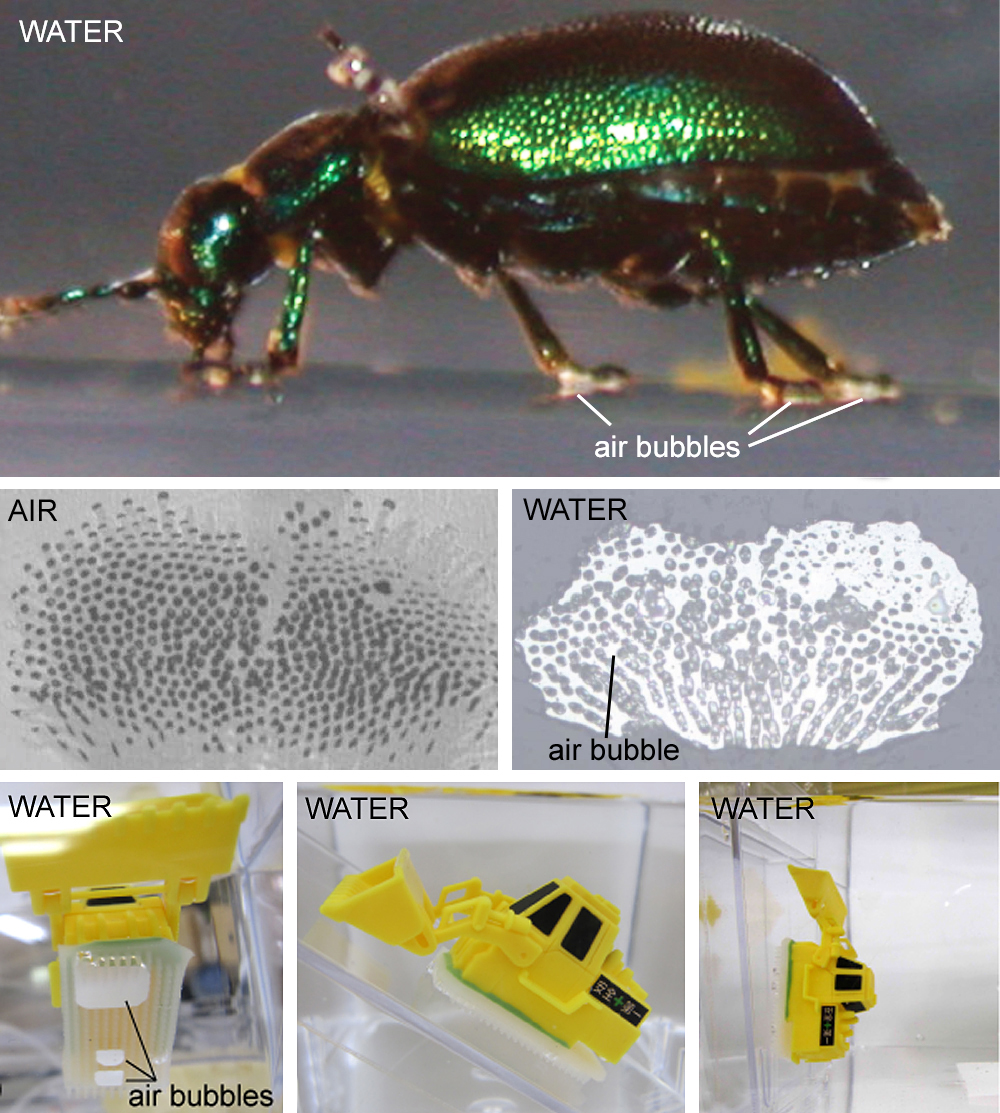It turns out the terrestrial leaf beetle Gastrophysa viridula uses air bubbles trapped between their adhesive setae to produce the needed boundary between air, liquids and solids, and produce capillary adhesion under water. A necessary condition for this process is some hydrophobic property of the solid. But this is no problem in nature since many leaf tops are water-repellent to some degree.
Professor Stanislav Gorb of Kiel University and Professor Naoe Hosoda of the National Institute for Material Science in Japan, have shown how to transplant the remarkable ability of the terrestrial leaf beetle to walk underwater and by modeling based on the beetle’s locomotion mechanism, they designed a bionic material which sticks to surfaces underwater.

Top: The beetle walking under water (white arrows indicate trapped air bubbles). Middle: Beetle feet attached to a surface. On the left it is surrounded by air. On the right it is under water. Bottom: A plastic toy bulldozer adhering to the substrate using the structured polymer with trapped air bubbles under water. Copyright: CAU, Source: Stanislav Gorb und Naoe Hosoda
“It is commonly known that adhesion between two solids in air can be produced with the help of water. Just like paper that sticks to table when it gets wet,” says Gorb. “The same principle under water remains an exciting perspective, because without air there is no capillary force. The beetle shows us how to do it. It takes air bubbles under water. Inspired by this idea, we have designed an artificial silicone polymer structure with underwater adhesive properties.”
The challenge was to find a possibility to keep air within the material. The solution was a micro structure which produces a material that is sticky underwater without using glue. Probable fields of application can be found in underwater optics or any other kind of underwater technologies.
Citation: Naoe Hosoda and Stanislav N. Gorb, 'Underwater locomotion in a terrestrial beetle: combination of surface de-wetting and capillary forces', Proceedings of the Royal Society B, Published online before print August 8, 2012, doi: 10.1098/rspb.2012.1297





Comments